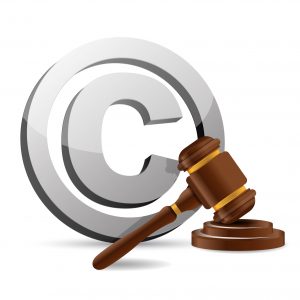Terminators, Mount Up!: Section 203 And Copyright Recovery (Part I)
Those who acquired copyrights for a pittance and built huge entertainment empires on their backs have been loathe to acquiesce to the statutory termination right.
 It is one of those paths to ruin that are paved with good intentions. Congress, recognizing the inequity in bargaining power that young or emerging artists have when dealing with corporate studios, publishers, and records labels, built into the 1976 amendment to the Copyright Act an escape hatch. This hatch allowed the artist who had unwittingly transferred his or her copyrights away for a pittance to recover those copyrights and have an opportunity to negotiate a more lucrative and even-handed deal for the work’s exploitation.
It is one of those paths to ruin that are paved with good intentions. Congress, recognizing the inequity in bargaining power that young or emerging artists have when dealing with corporate studios, publishers, and records labels, built into the 1976 amendment to the Copyright Act an escape hatch. This hatch allowed the artist who had unwittingly transferred his or her copyrights away for a pittance to recover those copyrights and have an opportunity to negotiate a more lucrative and even-handed deal for the work’s exploitation.
But, as you might imagine, this fine and altruistic idea has been perverted, impeded, and distorted to the point where few artists have seen much benefit. Those who acquired copyrights for a pittance and built huge entertainment empires on their backs have been loathe to acquiesce to the statutory termination right.
The right is codified at 17 USC 203, which provides an artist a single copyright term for a work and the right to terminate any grant of an assignment or license of the copyrights in the work during a specific temporal window. Section 203 expressly states that “[i]n the case of any work other than a work made for hire, the exclusive or nonexclusive grant of a transfer or license of copyright or of any right under a copyright, executed by the author on or after January 1, 1978, otherwise than by will, is subject to termination[.]”

Happy Lawyers, Better Results The Key To Thriving In Tough Times
The major entertainment corporations have, like buzzards, picked apart every word and turn-of-phrase in this meaty statutory provision to leave the artists gnawing at dry bone. In doing so, they have denied many an author their termination rights. At various times, they have claimed that everything is a work-for-hire, that the relevant grants were not executed by the author, and that the transfers took place at times outside the temporal purview of the statute. Shameless, yes, but also successful to a degree.
This strategy is on full display in the recent case of John Waite and Jon Ely versus Universal Music Group, a putative class action in which the artists claim that UMG has ignored their termination notices and committed infringement by continuing to exploit their music despite the termination. UMG has, predictably, moved to dismiss the complaint, and has parsed the language of the statute to weaponize it against the artists.
This is the most recent in a line of cases where copyright infringers have attempted to turn the language of the Copyright Act — which was promulgated to encourage the creation of artwork and should thus be construed in favor of the artist in cases of ambiguity — against the artist. This is done by seizing on specific and sometimes ambiguous language in the Act and asserting that it should be construed in ways that do not encourage the creation of new artwork. Infringers have already successfully deployed this strategy to deny a successful artist their rights to recover their expert and eDiscovery costs. And to delay proceedings by requiring an artist to have a copyright certificate in hand before filing a complaint.
UMG goes to town with this approach, noting that a strict construction of Section 203(a)’s text limits termination of copyright grants to those “executed by the author,” and cites to language from the famed Nimmer treatise stating that copyright transfers are subject to termination “only if executed by the author.” Now, the import of this language is to emphasize the importance of the signature on the termination notice. In other words, the transfer is ineffective until signed.
Sponsored

AI Presents Both Opportunities And Risks For Lawyers. Are You Prepared?

Law Firm Business Development Is More Than Relationship Building

How The New Lexis+ AI App Empowers Lawyers On The Go

Law Firm Business Development Is More Than Relationship Building
But, creatively, UMG has seized on this language and the standard industry use of loan-out companies to attempt to circumvent the termination right. As UMG helpfully points out, citing the non-entertainment industry publication, The Separate Tax Status of Loan-Out Corporation, a loan-out company employs the artist and then “loans out” his or her services to another person or entity. Many musicians set up loan-out companies to enter into recording deals on their behalf and these shell entities are simply agents and proxies, mere extensions of the artists themselves. Based on accepted industry practice, UMG cannot argue in good faith that an artist’s loan-out company is anything other than the artist itself.
But, the statutory language is the statutory language, and as the Supreme Court recently advised in Fourth Estate, we should hew closely to that language when interpreting the Act. If we so hew, it is a corporation (or perhaps an LLC) and not the author itself that granted to the record corporations the copyright. And since Section 203 is written to protect individual artists and not corporations or LLCs, the argument is that the loan-out companies do not have the right to terminate and that even if they did the plaintiffs in this case are the individual artists and not the loan-out companies.
For example, Waite’s loan-out company, Heavy Waite, Inc. (it is not uncommon for these loan-out companies to have punny or otherwise irreverent names) and not Waite is the signatory on the transfer for one of the songs at issue in the case. Waite, then, it is argued, cannot terminate that transfer as he is not technically the transferor. And Heavy Waite, Inc. is not the author of the song but is instead a simple assignee, and thus is not an “author” for purposes of the statute. Thus, the claims must fail as a matter of law, UMG argues.
And this is just the first of the wily and savage attacks on the artists’ termination right. We will dig into the others next week.
Sponsored

Happy Lawyers, Better Results The Key To Thriving In Tough Times

Curbing Client And Talent Loss With Productivity Tech
 Scott Alan Burroughs, Esq. practices with Doniger / Burroughs, an art law firm based in Venice, California. He represents artists and content creators of all stripes and writes and speaks regularly on copyright issues. He can be reached at [email protected], and you can follow his law firm on Instagram: @veniceartlaw.
Scott Alan Burroughs, Esq. practices with Doniger / Burroughs, an art law firm based in Venice, California. He represents artists and content creators of all stripes and writes and speaks regularly on copyright issues. He can be reached at [email protected], and you can follow his law firm on Instagram: @veniceartlaw.







